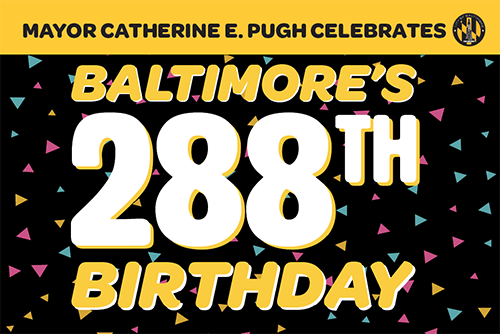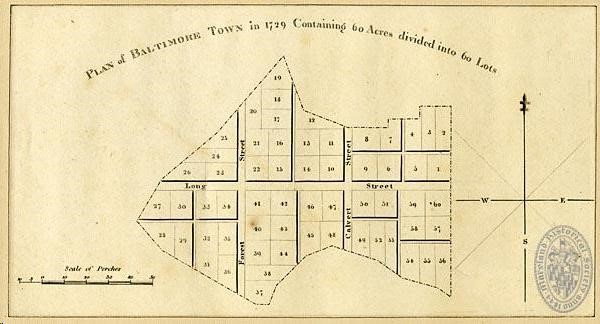Happy Birthday Baltimore!

Brief History of the Founding of Baltimore Town
It was in 1729 that Charles Carroll of Annapolis joined with eight of the leading men of Baltimore County to successfully petition the upper house of the General Assembly “for the building of a Town, on the North side of the Patapsco River” on land belonging to himself and his younger brother, Daniel Carroll. This land that became “Baltimore Town” and over time, The City of Baltimore—a flourishing port city with a “cosmopolitan population and a wide range of urban amenities”-- enjoyed many natural advantages that made it ideally suitable for the establishment of a town. Despite the periodic flooding of the Jones Falls and marshes that had to be drained to minimize the risk of malaria, the area had a deep, safe harbor that allowed shipping to be conducted easily. Fast moving streams from the hills to the north and the west provided energy to power mills. The fertile soil supported farming. Abundant forests provided wood for building and for fuel. Stone and iron ore were easily accessible. Finally, the moderate climate spared the inhabitants the harsh challenges that land to the north and south presented.

Plan of Baltimore in 1729 containing 60 acres divided into 60 lots, ca 1823, MdHS, Hambleton Print Collection, H10.
The legislation that Charles Carroll and the other petitioners argued to be passed allowed for sixty acres of land to be divided into one-acre lots, to be purchased in fee simple. For each acre, the Carroll brothers would receive either forty shillings currency or tobacco at the rate of one penny per pound. The buyer of each lot was required to build a house of 400 square feet within 18 months or forfeit his land. County Surveyor Philip Jones was hired to lay out the town, for which he was paid in tobacco.
Commissioners—who were appointed for life and had the power to fill vacancies as they occurred-- were appointed to supervise the design of the town and the sale of the lots. After the town was laid out, three streets were built—Calvert Street, Forest (now Charles) Street, and Long Street, which became Market and then Baltimore Street. Charles Carroll, as owner of the property, had first choice of lots and took lot number forty-nine—the prime waterfront property next to the wharf at the foot of Calvert Street. After a flurry of purchases of additional lots, many along the waterfront, progress slowed but continued over the next few years. As Suzanne Ellery Greene Chapelle, the writer of Baltimore: An Illustrated History, put it, “Baltimore was not an instant boom town. Its growth resulted rather from the ingenuity of its citizens and half a century of hard work.”